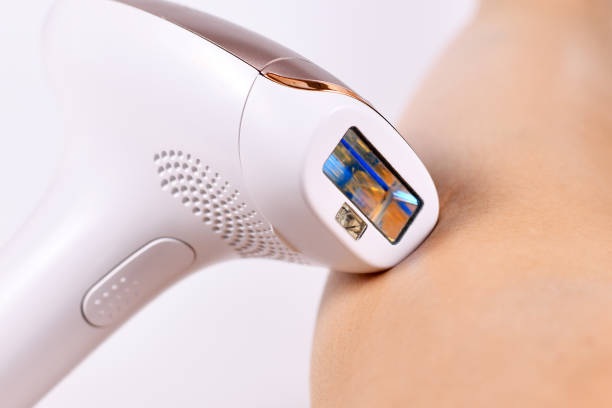Laser hair removal is generally considered safe when performed by a trained professional using appropriate equipment. However, like any medical procedure, it does carry some potential side effects and risks. It’s important to consult with a qualified practitioner to understand the specific risks and benefits based on your individual circumstances.
Some potential side effects of laser hair removal may include:
- Skin irritation: Temporary redness, swelling, or discomfort in the treated area is common and typically resolves within a few hours to a couple of days.
- Pigment changes: Laser hair removal can sometimes cause temporary lightening or darkening of the skin. This is more common in individuals with darker skin tones but usually resolves on its own over time.
- Burns and blisters: If the laser is not used correctly or at appropriate settings, it may cause burns or blisters. This risk can be minimized by choosing a reputable and experienced practitioner.
- Scarring: Although rare, laser hair removal has the potential to cause scarring, particularly in individuals with a tendency to develop keloids or hypertrophic scars.
Regarding pain, laser hair removal can cause some discomfort during the treatment. The sensation is often described as a mild rubber band snap or a slight stinging or prickling sensation. However, pain tolerance varies among individuals, and some may find it more uncomfortable than others. Many modern laser devices have built-in cooling mechanisms to help minimize discomfort during the procedure.
To ensure the safety and effectiveness of laser hair removal, it’s crucial to choose a reputable clinic or practitioner with proper training and experience. They can assess your individual circumstances, discuss the potential side effects and risks, and develop a treatment plan tailored to your needs.
How long does pain last after laser hair removal?

Immediately after the treatment, you may experience some mild redness, swelling, or a sensation similar to a sunburn in the treated area. This is a normal reaction and should resolve relatively quickly. Applying a cold compress or aloe vera gel can help alleviate any immediate discomfort.
Some individuals may also experience a mild itching or prickling sensation as the hair begins to shed in the treated area, but this is usually temporary and resolves within a week or two.
It’s important to note that everyone’s pain tolerance and sensitivity levels are different, so individual experiences may vary. If you have any concerns about the level or duration of pain you’re experiencing after laser hair removal, it’s best to consult with your practitioner for proper evaluation and advice.

What hurts more laser or waxing?
During waxing, a layer of wax is applied to the skin and then swiftly removed, pulling out the hair from the root. This process can cause a sharp, quick pain as the hair is pulled out. Additionally, waxing can sometimes lead to skin redness, inflammation, or irritation, which may further contribute to discomfort.
On the other hand, laser hair removal uses laser energy to target and destroy hair follicles. While it may cause some discomfort, it is often described as a mild rubber band snap or a slight stinging sensation. Many modern laser devices also incorporate cooling mechanisms to help minimize discomfort during the treatment.
Moreover, the pain experienced during laser hair removal tends to decrease over time as the number of sessions progresses and the hair becomes finer and less dense.
It’s worth noting that individual pain tolerance and sensitivity can vary, so what may be tolerable for one person might be more uncomfortable for another. If you have concerns about pain during either procedure, it’s best to consult with a professional who can provide a more personalized assessment based on your specific circumstances.
Does laser hurt more each time?
During the initial sessions, when the hair is denser and thicker, you may experience a slightly higher level of discomfort compared to later sessions. However, as the treatment progresses and the hair becomes finer and less dense, the sensation during laser hair removal often becomes more tolerable.
It’s important to note that individual pain tolerance can vary, and some people may still find laser hair removal mildly uncomfortable even after several sessions. However, advancements in laser technology, such as the inclusion of cooling mechanisms, have helped to minimize discomfort during the procedure.
If you have concerns about pain or discomfort during laser hair removal, it’s advisable to discuss your experiences with the practitioner performing the treatment. They may be able to adjust settings or provide additional measures to ensure your comfort during the sessions.
Which laser hair removal is least painful?
The level of pain experienced during laser hair removal can depend on various factors, including your individual pain tolerance, the sensitivity of the treated area, and the specific laser technology used. While pain perception can vary among individuals, some laser technologies are generally considered to be less painful than others. Here are a few examples:
- Diode lasers: Diode lasers are commonly used for laser hair removal and are known for their relatively comfortable treatment experience. They often have built-in cooling mechanisms, such as a chilled tip or cooling spray, to minimize discomfort during the procedure.
- Alexandrite lasers: Alexandrite lasers are another popular option for laser hair removal. They offer a larger spot size and high repetition rate, allowing for faster treatment sessions. Many Alexandrite lasers also include a cooling system to help reduce discomfort.
- Nd:YAG lasers: Nd:YAG lasers are often used for individuals with darker skin tones because they have a longer wavelength that can bypass the melanin in the skin. While they may be slightly less effective for hair removal, they tend to be more comfortable and less likely to cause skin irritation.
It’s important to note that the level of pain experienced can still vary from person to person, and individual factors such as skin sensitivity and hair thickness can influence the perceived discomfort. To determine the most suitable and comfortable laser hair removal option for you, it is best to consult with a qualified practitioner who can assess your specific needs and recommend the appropriate laser technology.
